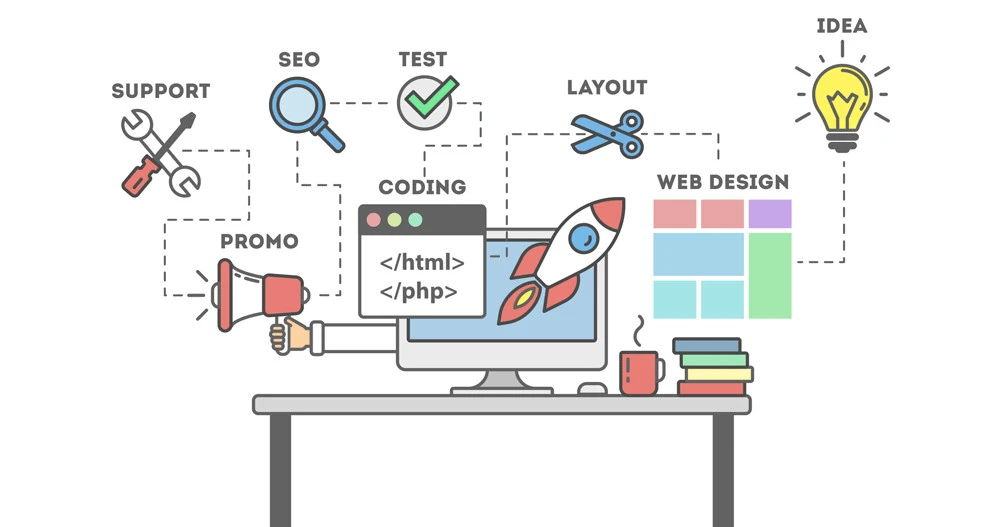A visually appealing, functional, and search-engine-optimized website not only helps you attract potential customers but also plays a crucial role in converting visits into measurable business outcomes. When executed strategically, website design and SEO become powerful tools that work in tandem to elevate your brand and grow your digital footprint.
1. Strategic Website Design for Conversion and Branding
Effective website design goes beyond aesthetics. It’s about creating a seamless user journey that reflects your brand’s values while guiding visitors toward taking meaningful actions. From e-commerce platforms to corporate websites, custom web design is tailored to meet specific business objectives—be it product sales, lead generation, or information dissemination.
A well-designed website aligns visual elements with user behavior patterns. Key features include responsive design that ensures optimal performance across all devices and browsers, intuitive navigation for a frictionless experience, and clear call-to-action buttons to increase engagement. For businesses dealing with data-heavy operations or online tools, applications and dashboards are crafted to prioritize functionality without compromising on design clarity.
Website redesign or revamping services further help businesses modernize their digital presence. A dated website can hurt both credibility and conversions. By revamping layout, improving load speeds, and restructuring content, companies can regain user trust, reduce bounce rates, and increase dwell time—all of which contribute to better search engine rankings and ROI.
2. The Role of SEO in Website Performance
Search Engine Optimization (SEO) is integral to ensuring that your beautifully designed website actually gets found online. Without SEO, even the most well-crafted websites may remain invisible to your target audience. Technical SEO begins with clean coding, mobile optimization, and fast loading speeds—elements that are naturally embedded in quality web design.
On-page SEO includes optimizing content for targeted keywords, writing effective meta tags, structuring internal links, and using image alt attributes correctly. These steps ensure that search engines can easily index and understand your website content, improving rankings for relevant search terms.
Off-page SEO, such as link-building and reputation management, further enhances your site’s authority. Together, these tactics drive organic traffic, which is often more cost-effective and sustainable than paid campaigns. A cohesive strategy that integrates SEO with design ensures your website not only looks good but also ranks well—making it discoverable to users actively seeking your services.
3. Business Impact and Long-Term Growth
The ultimate goal of combining website design and SEO is to create a business asset that delivers long-term value. A high-performing website can become your most powerful sales tool—working around the clock to attract leads, convert users, and retain customers. For e-commerce businesses, this means more transactions; for service-based companies, it means more inquiries and consultations.
Additionally, a well-optimized and conversion-focused site enhances customer trust and loyalty. When users find the information they need easily and have a positive experience, they’re more likely to return and refer others. Consistent performance tracking through analytics allows businesses to refine their strategies over time, ensuring continued growth.
What Our Previous Client Says
What we value most about working with Reveno Digital is the flexibility and personalized approach they bring to every project. It truly feels like we’re working with an extension of our own team.
Reveno’s visual work added a whole new energy to SMARTIdol. A few of the government guests even pointed it out — which says a lot.
The brand film created by Reveno Digital played a key role in helping us pitch to international clients across the UK, Canada, and Australia. It’s been instrumental in attracting new business and expanding our reach.





